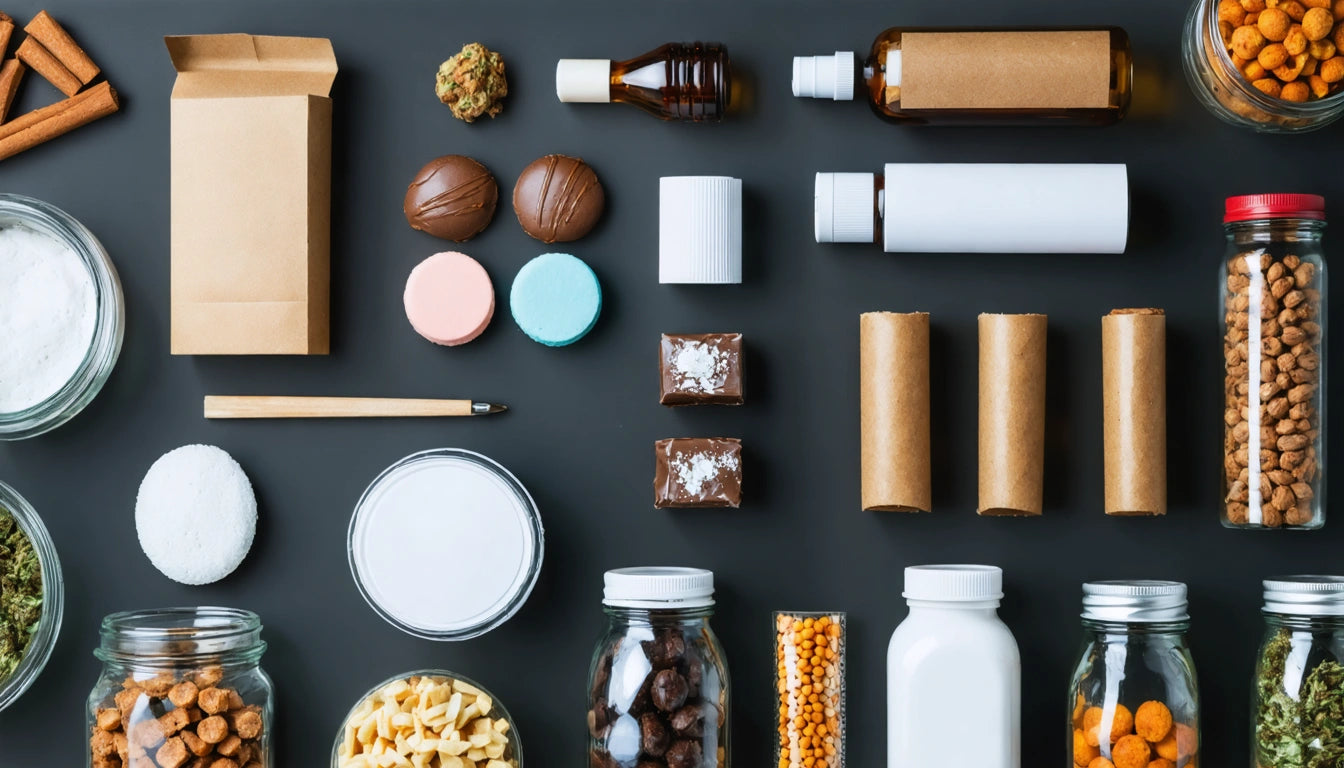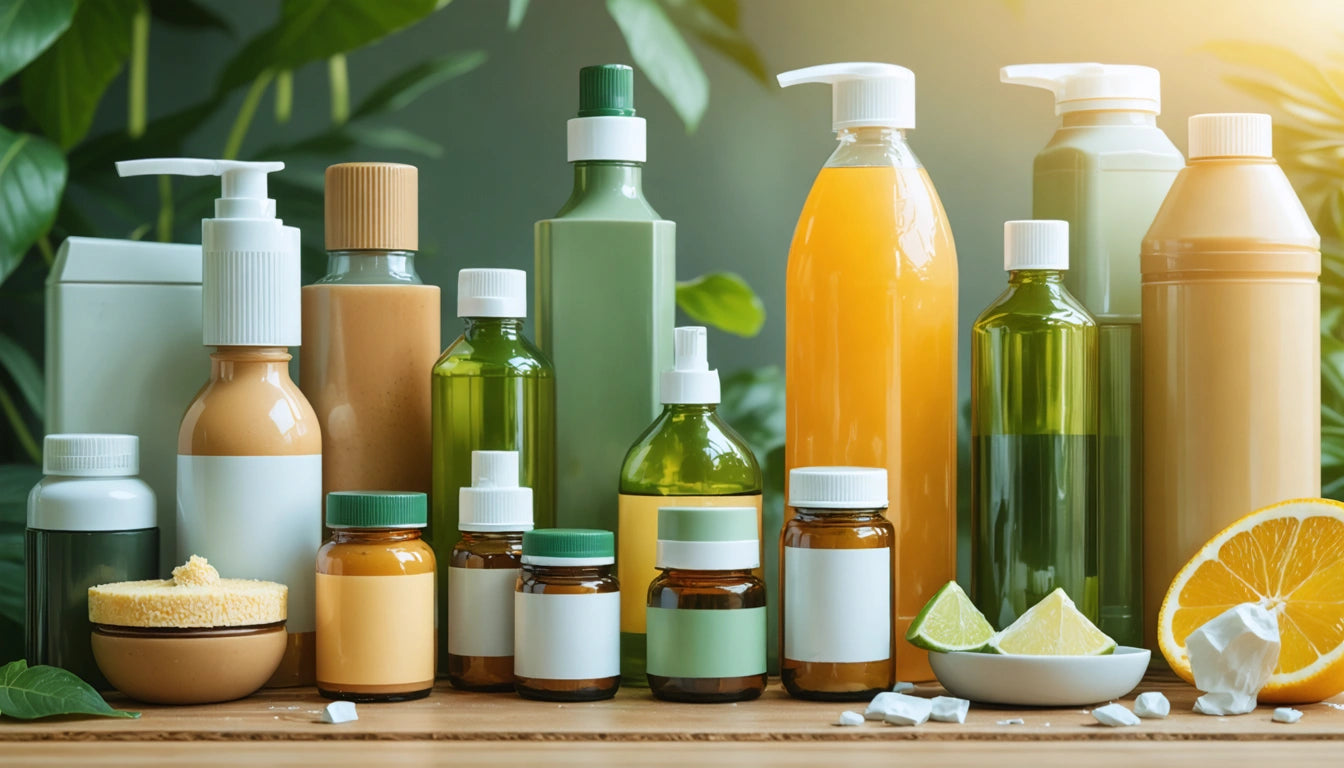Table of Contents
- Food-Safe Requirements for Cannabis Edible Packaging
- FDA-Approved Materials for Edible Cannabis Products
- Child-Resistant Considerations for Edible Packaging
- Sustainable Options for Food-Safe Cannabis Packaging
- Material Selection Based on Product Type and Shelf Life
- Future Packaging Innovations for Cannabis Edibles
Cannabis edibles require specialized packaging that satisfies both food safety regulations and cannabis compliance laws. As these products are consumed directly, packaging materials must be free from harmful chemicals that could leach into the product while also providing adequate protection from environmental factors that degrade quality and potency.
Food-Safe Requirements for Cannabis Edible Packaging
For cannabis edibles, packaging must meet FDA food safety standards in addition to state-specific cannabis regulations. This means materials must be:
- Non-toxic and non-leaching
- Free from BPA, phthalates, and other harmful chemicals
- Manufactured under sanitary conditions
- Properly labeled regarding food contact safety
According to this guide on food-safe packaging for edibles, materials must have specific certifications indicating they're safe for direct food contact. These include FDA approval and compliance with Title 21 of the Code of Federal Regulations (CFR).
FDA-Approved Materials for Edible Cannabis Products
Food-Grade Plastics
Several plastic types are considered food-safe and appropriate for cannabis edibles:
- PET (Polyethylene Terephthalate): Commonly used for bottles and jars
- HDPE (High-Density Polyethylene): Durable and resistant to moisture
- PP (Polypropylene): Heat-resistant and suitable for products requiring hot-filling
- LDPE (Low-Density Polyethylene): Flexible and often used for bags and pouches
Understanding material grades is essential when selecting the right plastic for your specific edible product.
Glass Containers
Food-grade glass is inert, doesn't leach chemicals, and provides excellent barrier properties. It's particularly suitable for liquid edibles, tinctures, and premium products where presentation matters. The pros and cons of glass versus other materials should be considered when making packaging decisions.
Mylar and Foil Pouches
Mylar (PET film) pouches with food-grade liners are increasingly popular for cannabis edibles due to their excellent barrier properties and customizability. These pouches protect products from light, moisture, and oxygen while allowing for vibrant printing and branding. For bulk packaging needs, large-capacity mylar storage bags offer both compliance and preservation benefits for commercial producers.
Child-Resistant Considerations for Edible Packaging
Beyond food safety, cannabis edibles packaging must incorporate child-resistant features. Common approaches include:
- Push-and-turn caps for bottles and jars
- Squeeze-and-pull mechanisms for pouches
- Sliding locks on containers
- Multi-step opening processes
These features must be certified to ASTM D3475 or 16 CFR 1700 standards, which verify that packaging is difficult for children under five to open but accessible for adults, including seniors.
Sustainable Options for Food-Safe Cannabis Packaging
As environmental concerns grow, many brands are seeking sustainable alternatives that maintain food safety standards. Options include:
- PLA (Polylactic Acid): Plant-based plastic alternative
- Recycled PET (rPET): Made from recycled plastic bottles
- Hemp-based plastics: Emerging option with reduced environmental impact
- Biodegradable films: Breaking down more quickly than conventional plastics
Sustainable packaging alternatives are becoming increasingly important as consumers demand eco-friendly options.
Material Selection Based on Product Type and Shelf Life
Different edible formats require specific packaging considerations:
- Chocolates and temperature-sensitive items need materials with heat resistance properties
- Baked goods require packaging that prevents staleness while maintaining moisture levels
- Gummies and candies benefit from barrier films that prevent sticking and melting
- Beverages need containers that prevent leakage and maintain carbonation when applicable
Material selection also impacts product shelf life, weight, and shipping costs, all critical factors in the overall packaging strategy.
Future Packaging Innovations for Cannabis Edibles
The cannabis edibles packaging landscape continues to evolve with several emerging trends:
- Smart packaging with QR codes linking to lab results and dosage information
- Antimicrobial materials that extend product shelf life
- Compostable packaging that breaks down completely after use
- Plant-based inks and adhesives that reduce overall environmental impact
When selecting packaging materials, manufacturers should look for recognized material certifications that verify both food safety and environmental claims. These certifications provide assurance to consumers and regulators that packaging meets all necessary standards for cannabis edible products.
By prioritizing both compliance and quality in packaging material selection, cannabis edible producers can ensure product integrity while satisfying the complex regulatory requirements of this rapidly evolving market.











Leave a comment
All comments are moderated before being published.
This site is protected by hCaptcha and the hCaptcha Privacy Policy and Terms of Service apply.